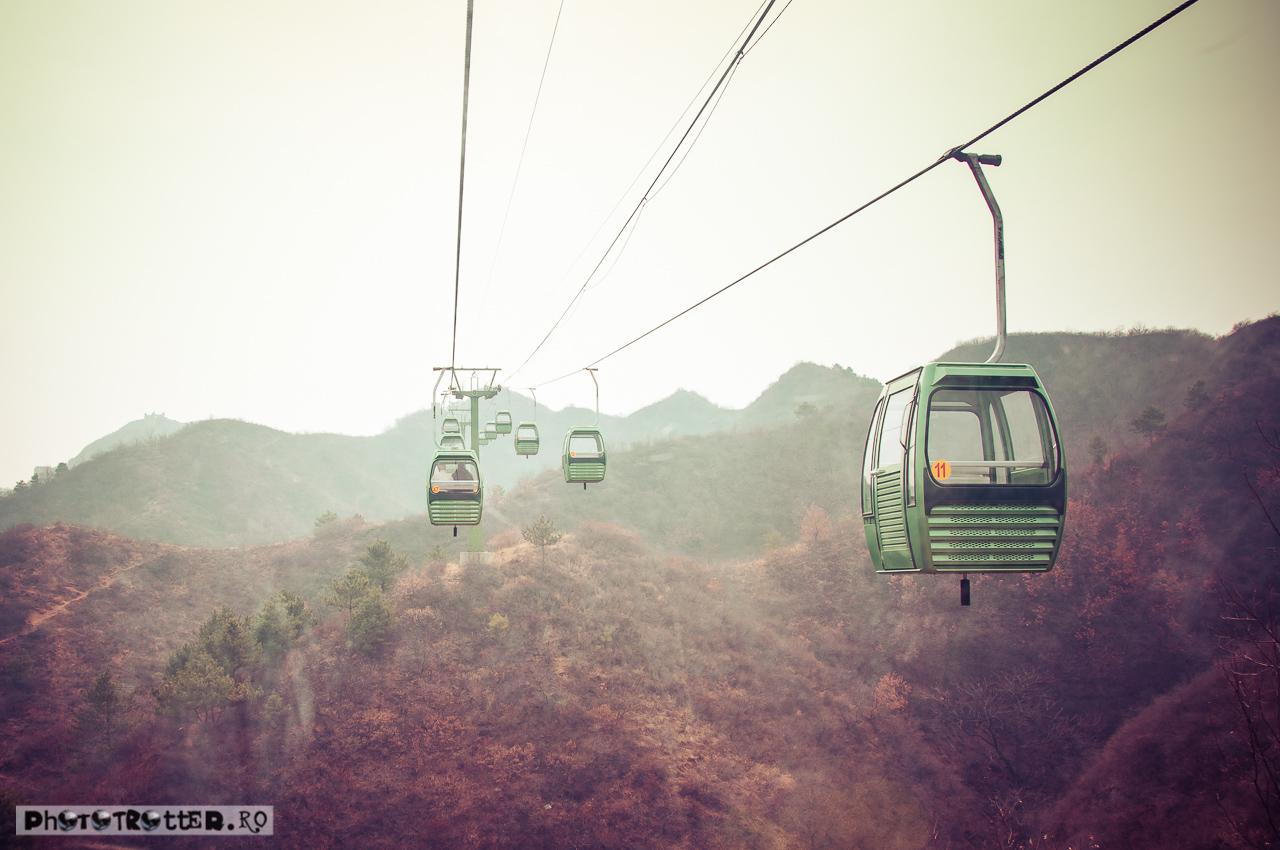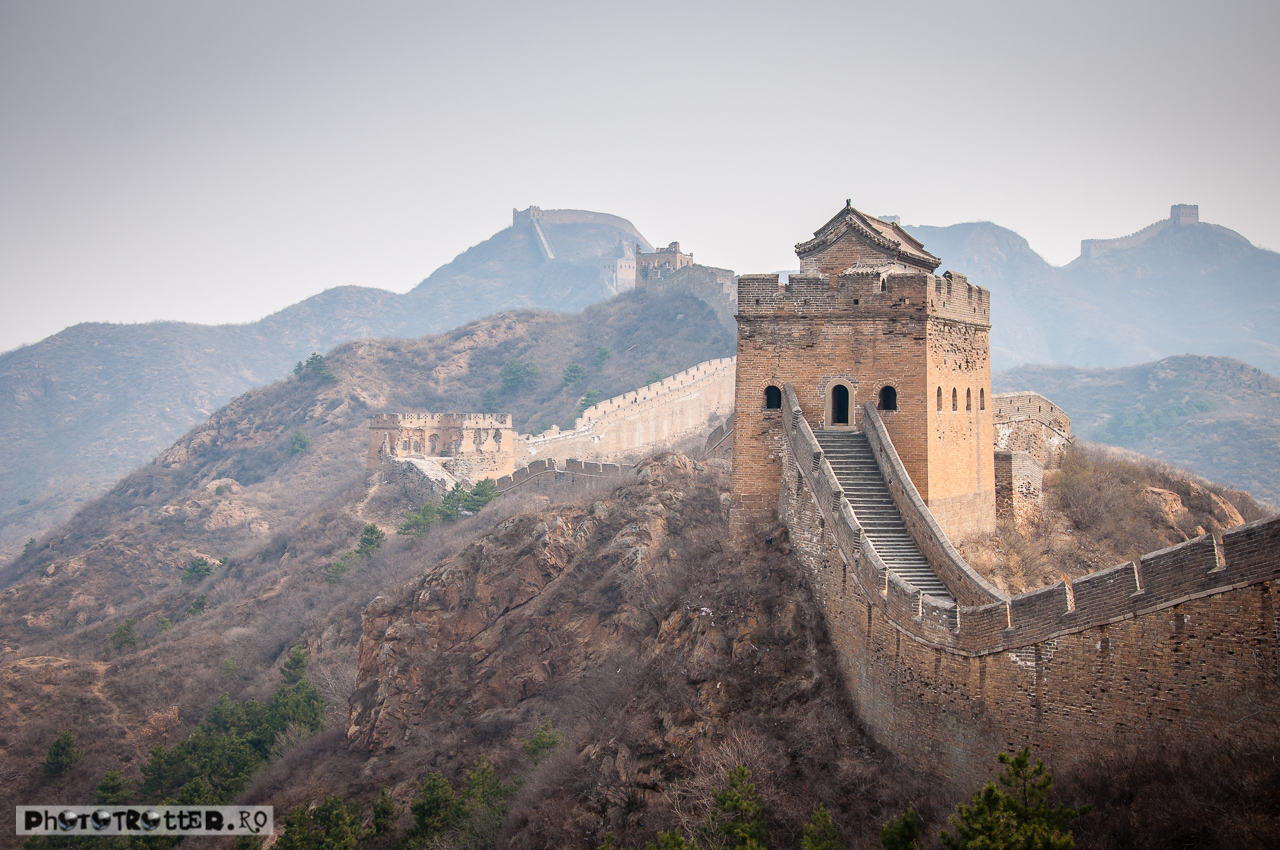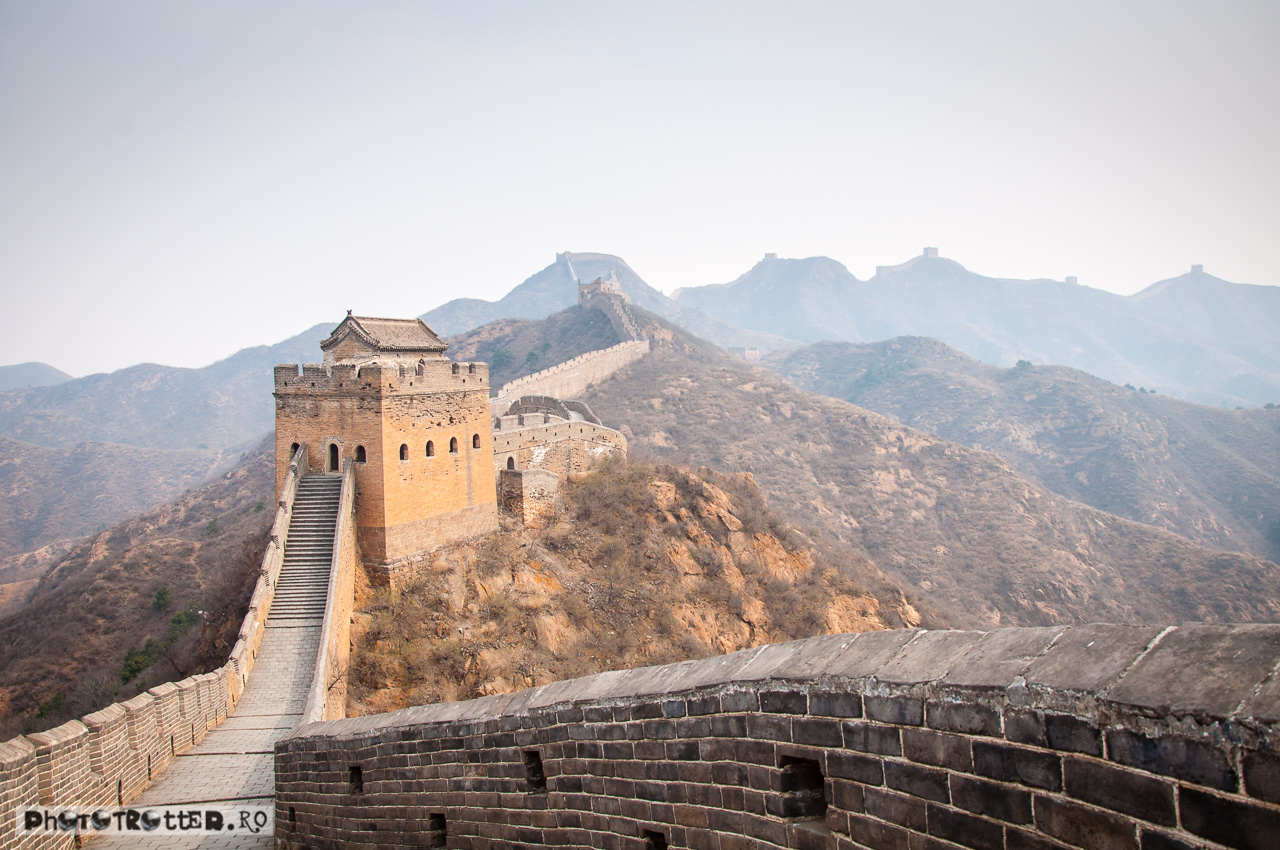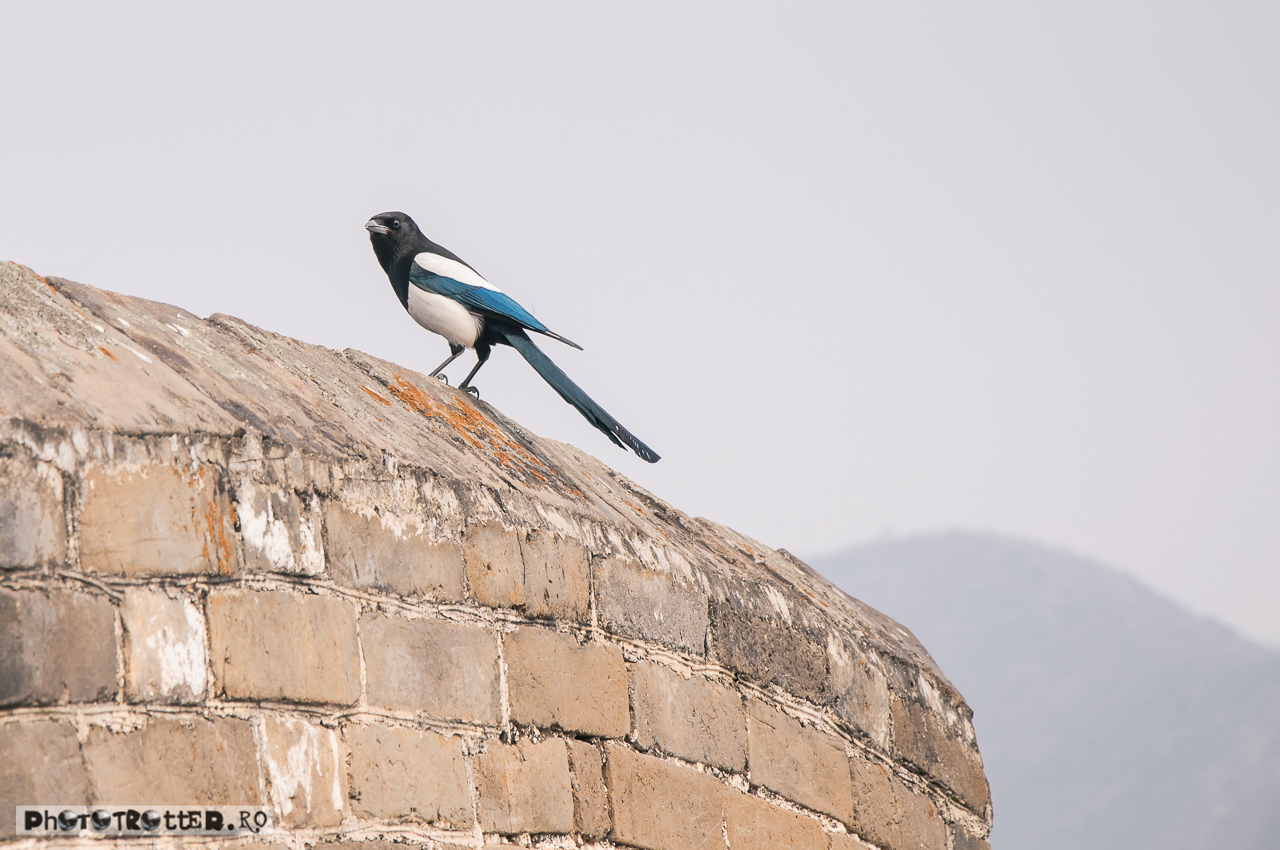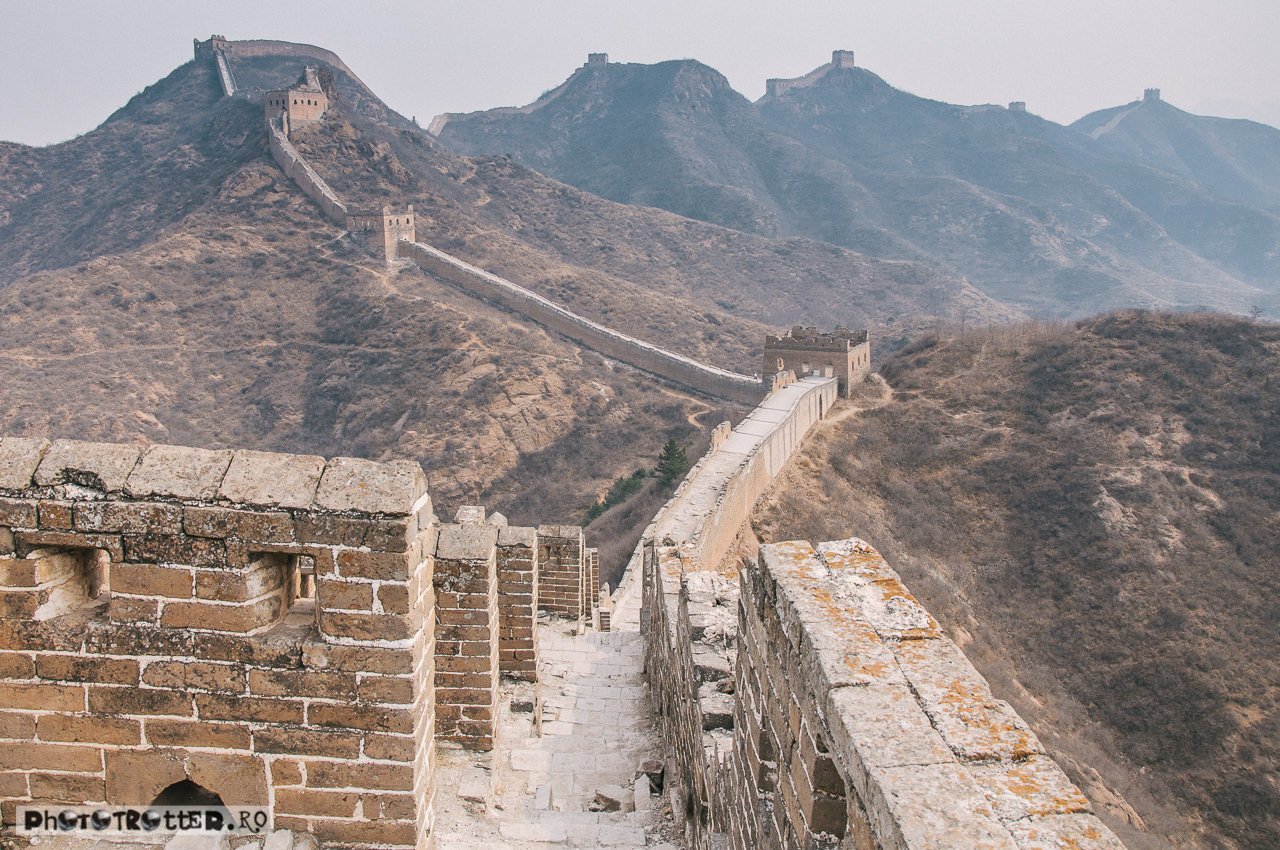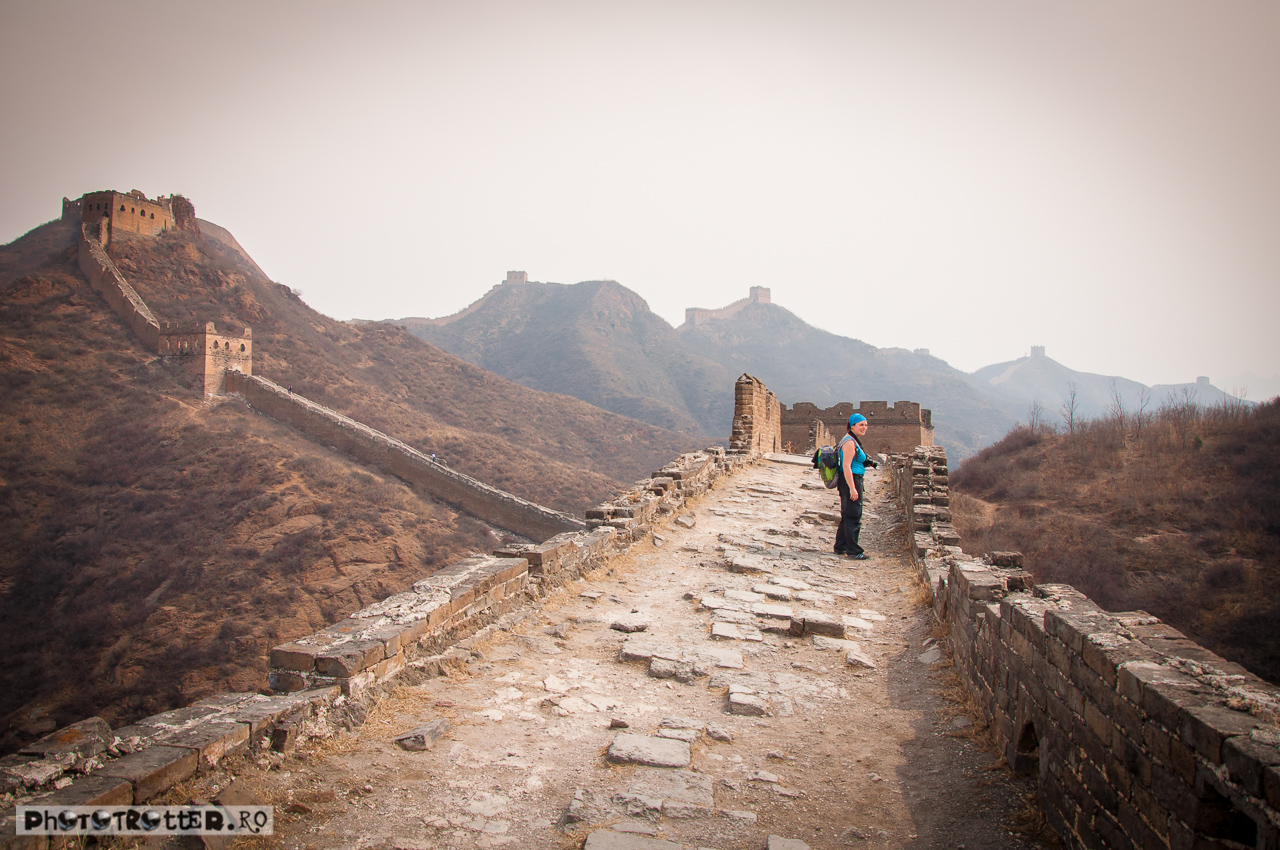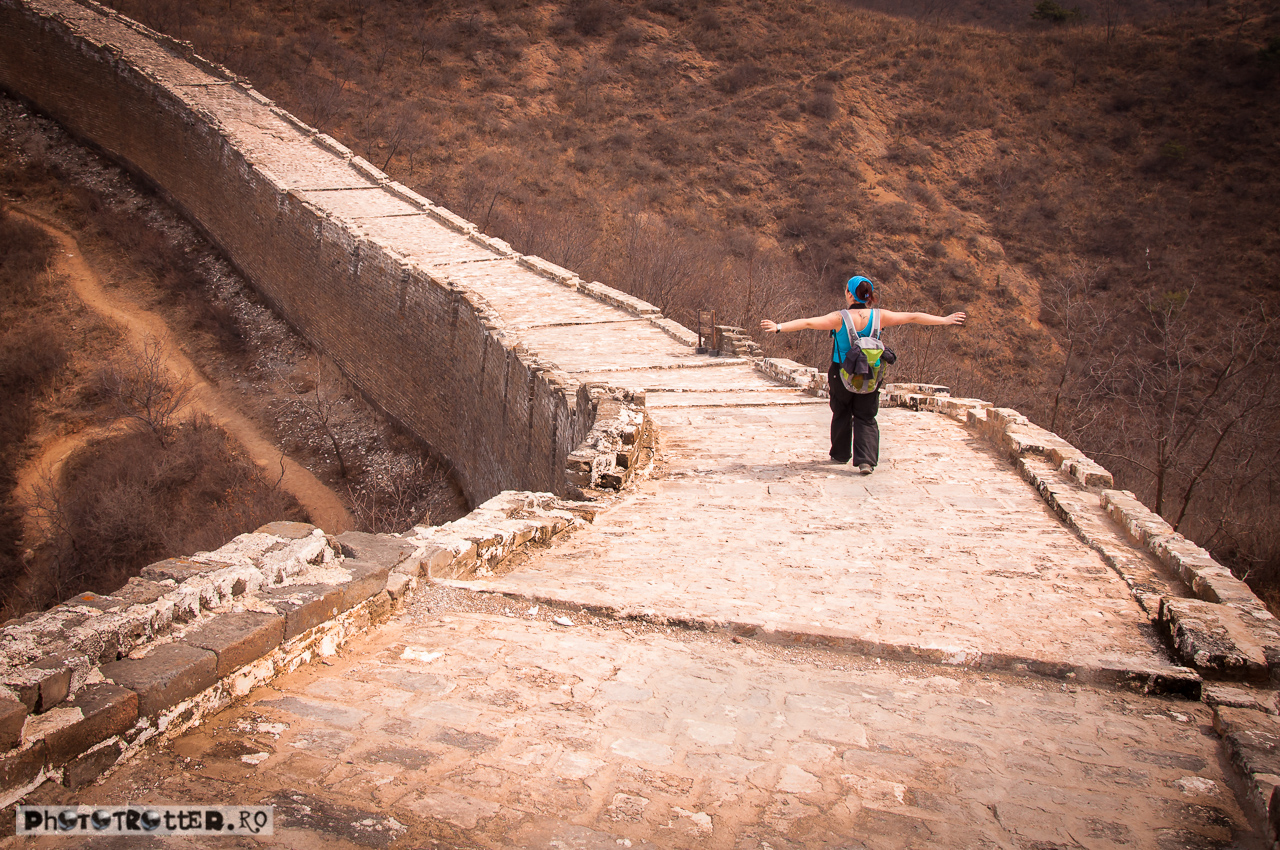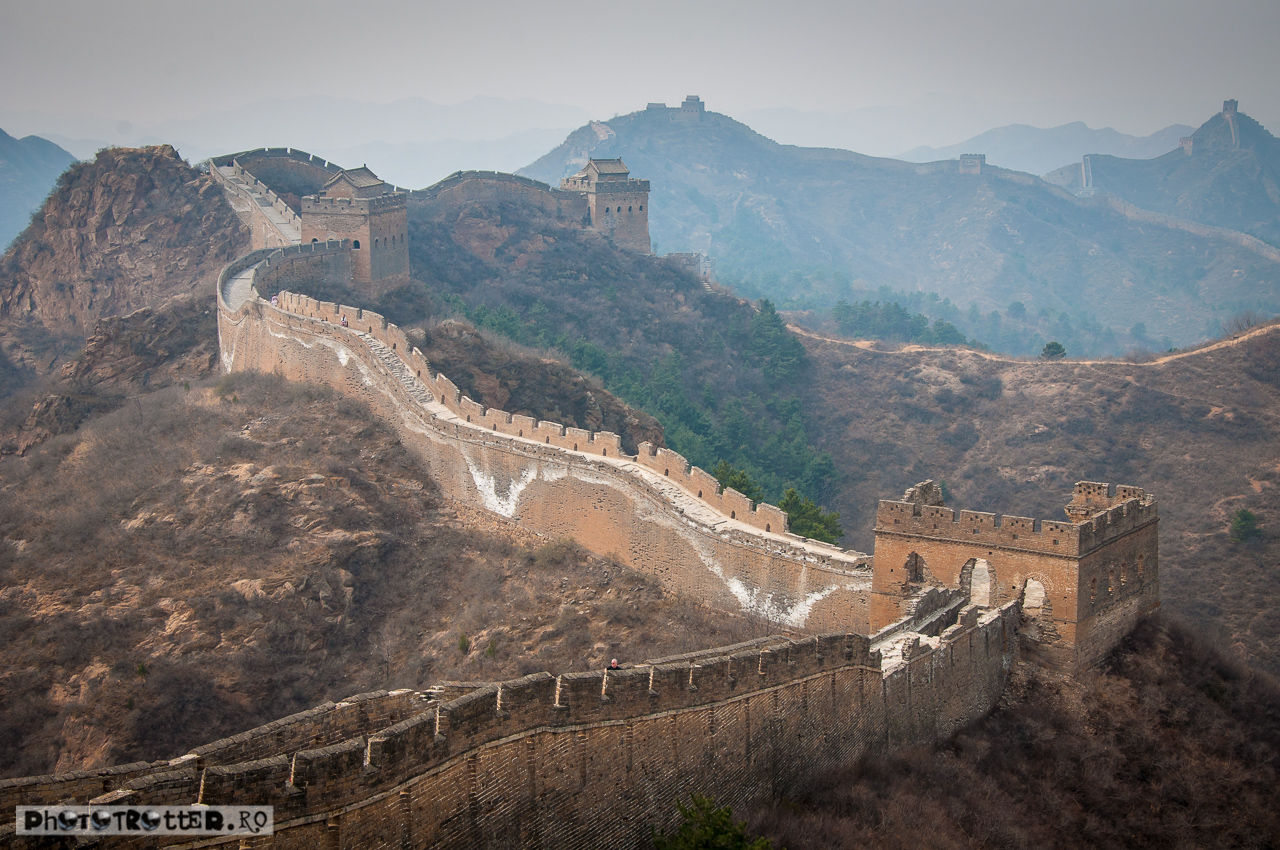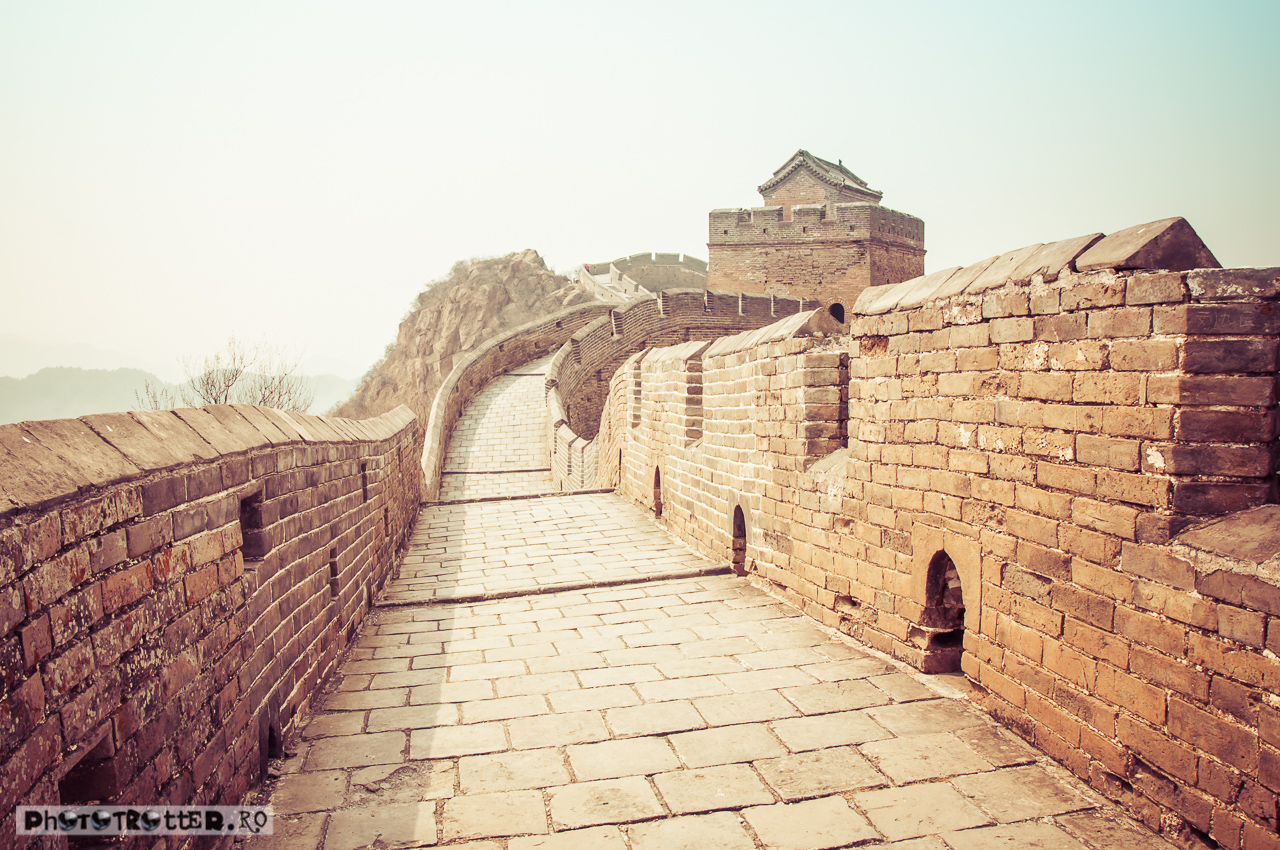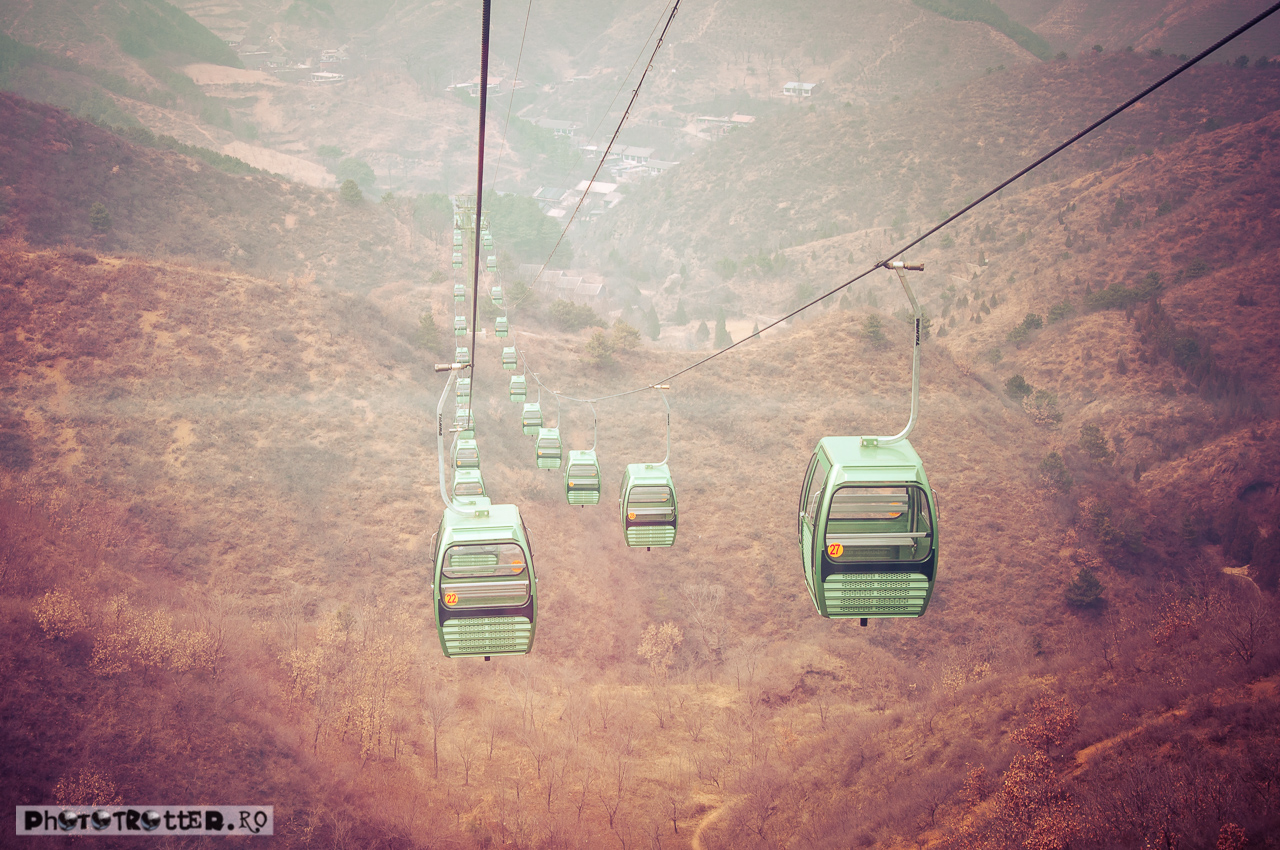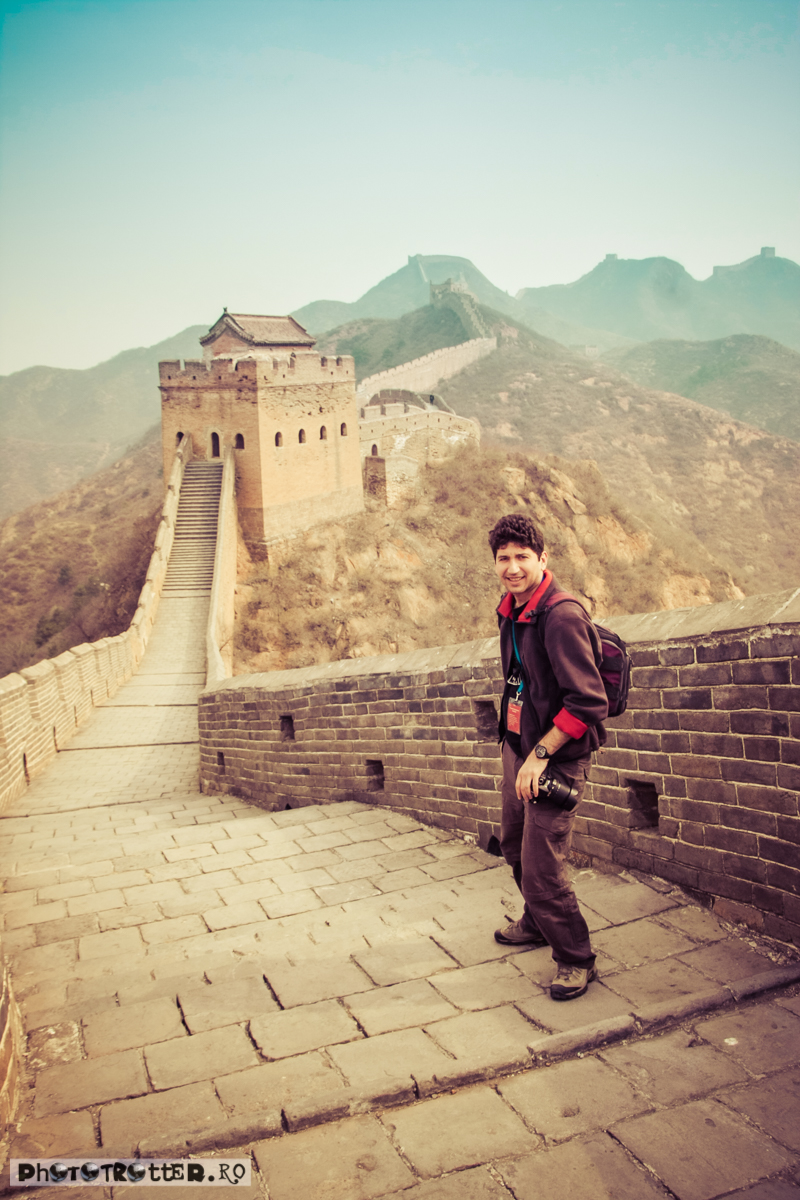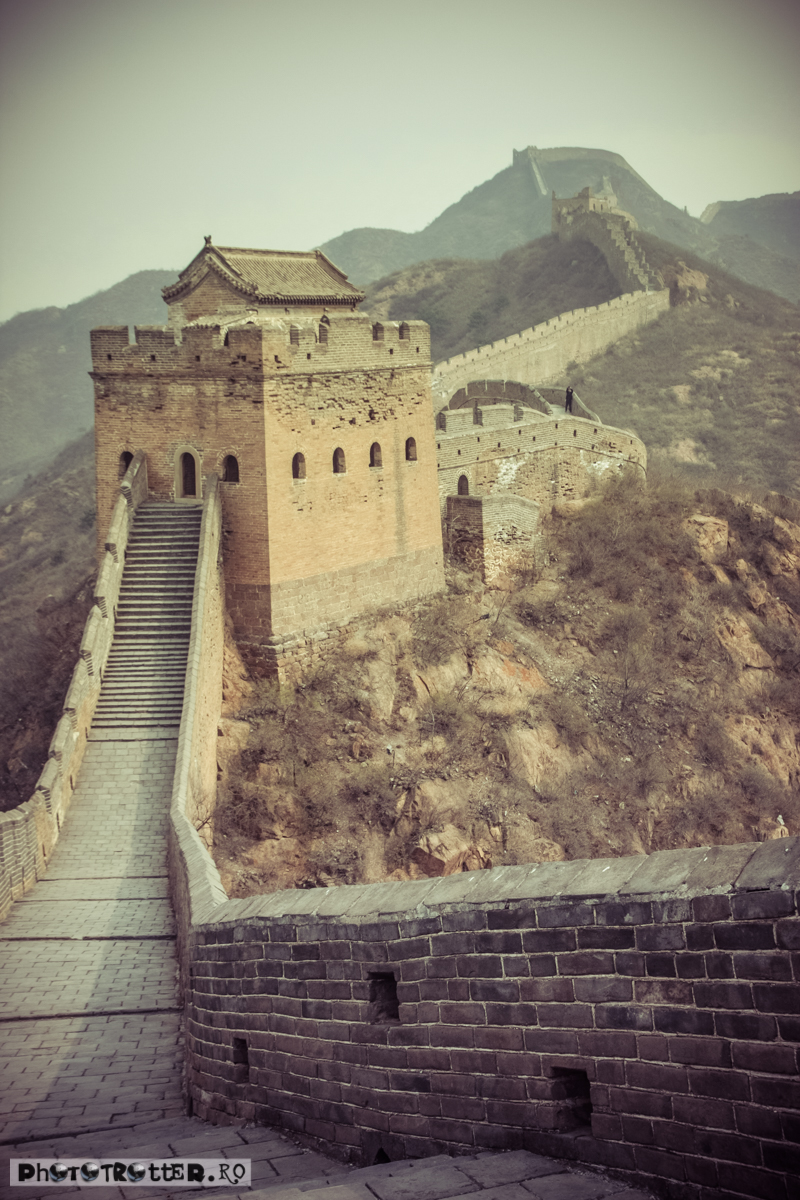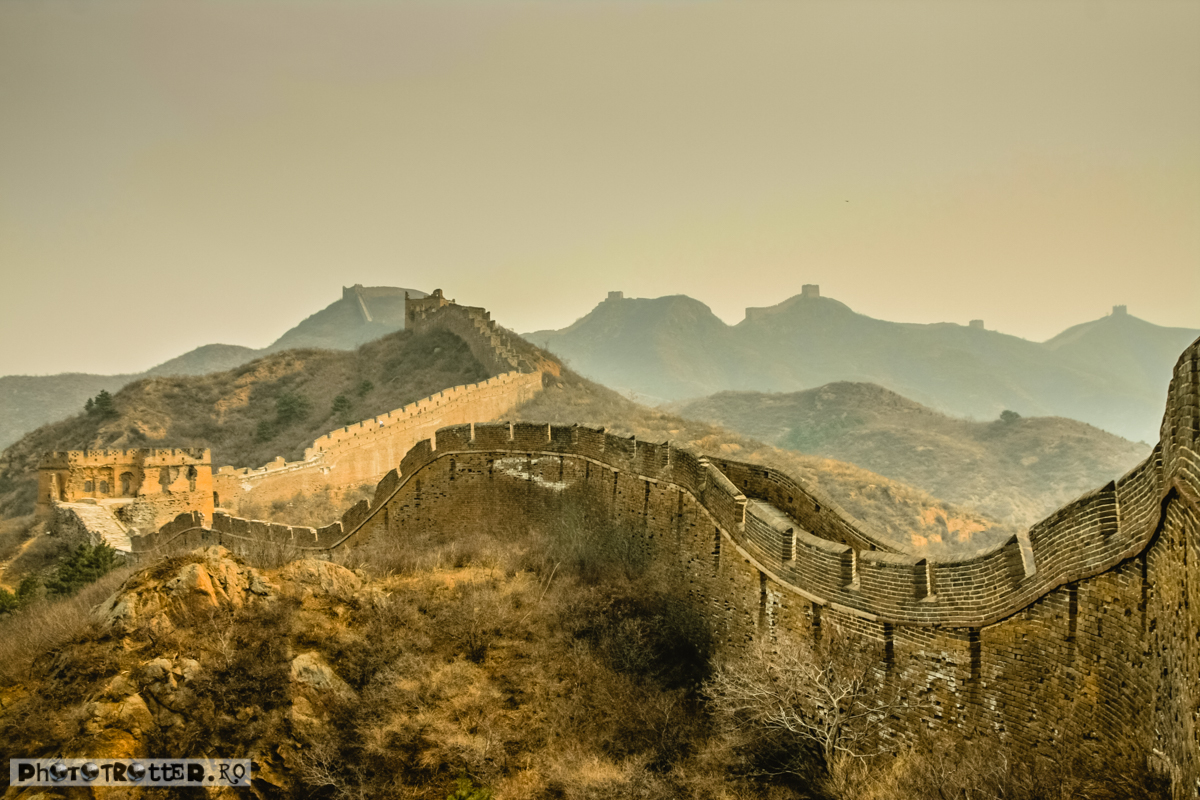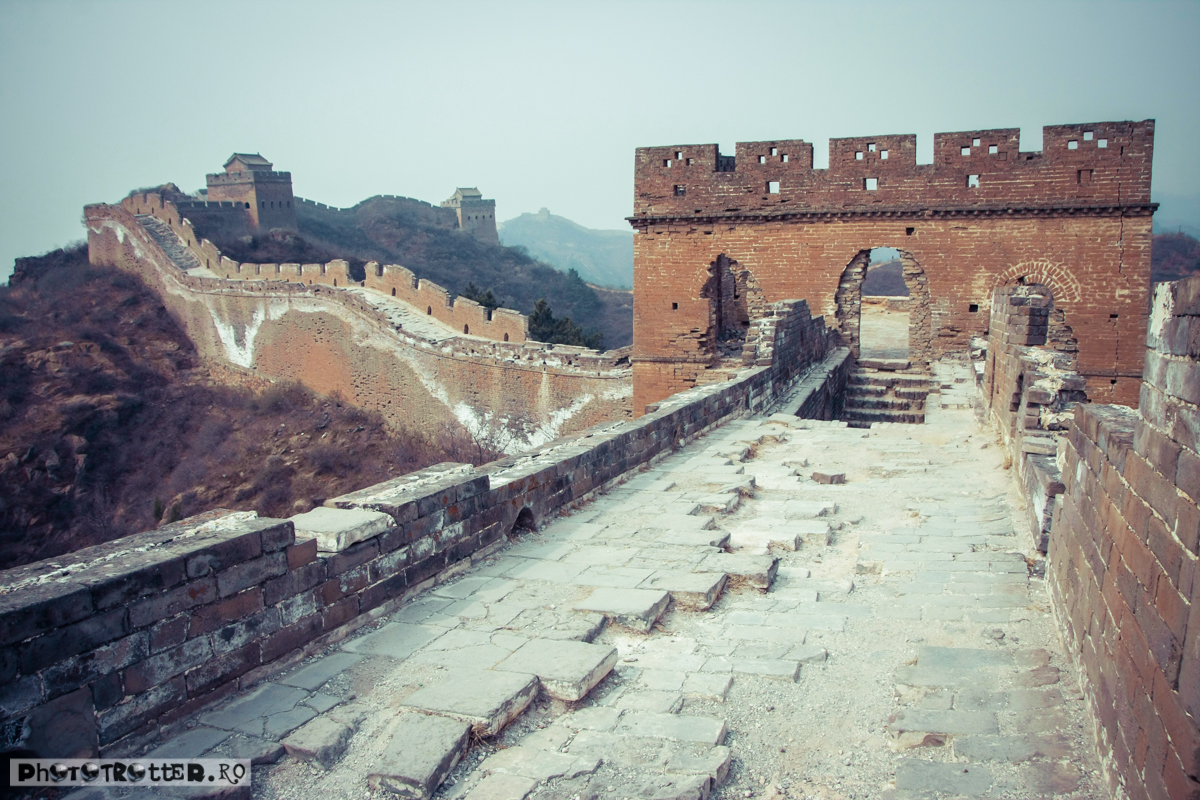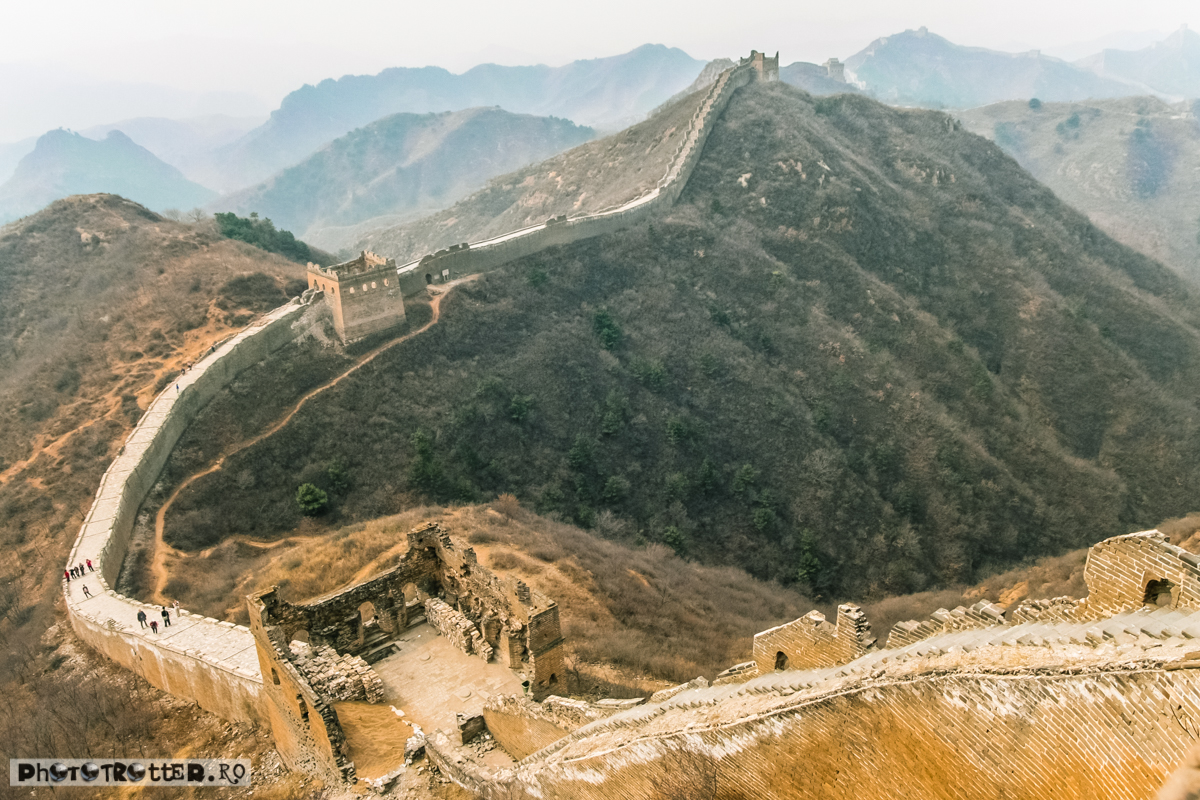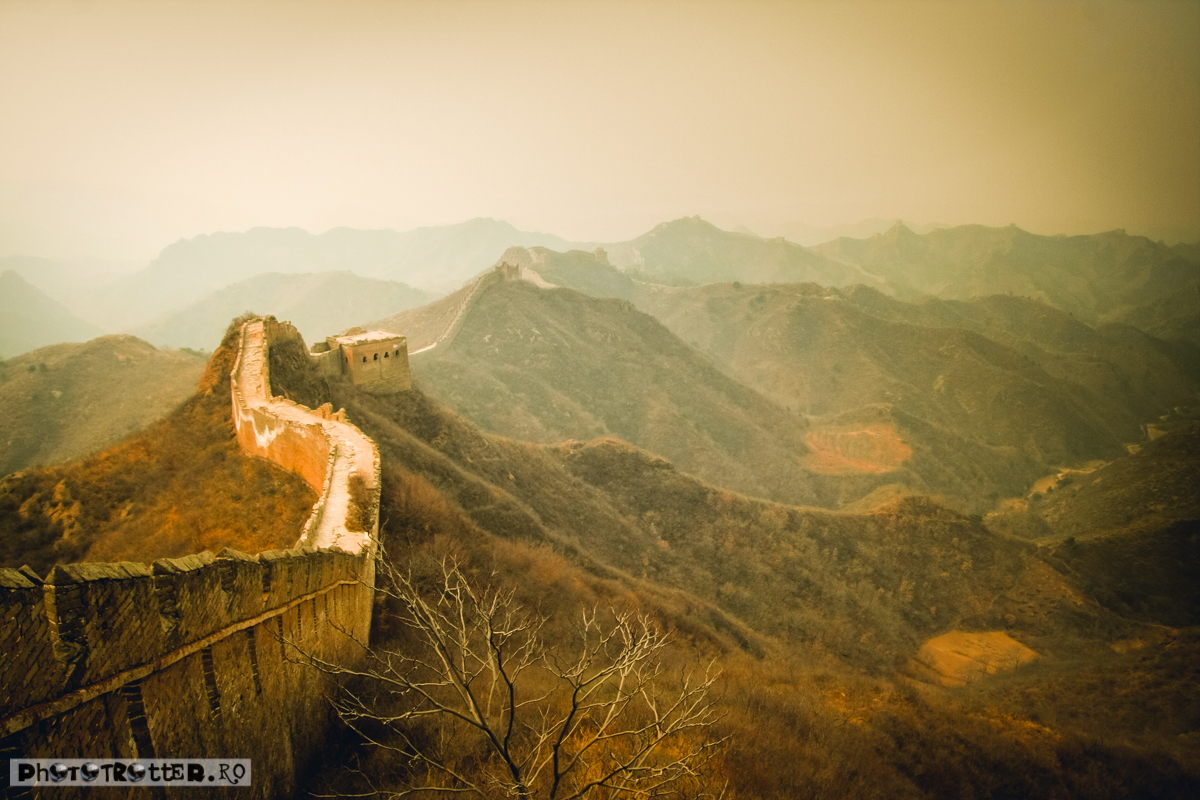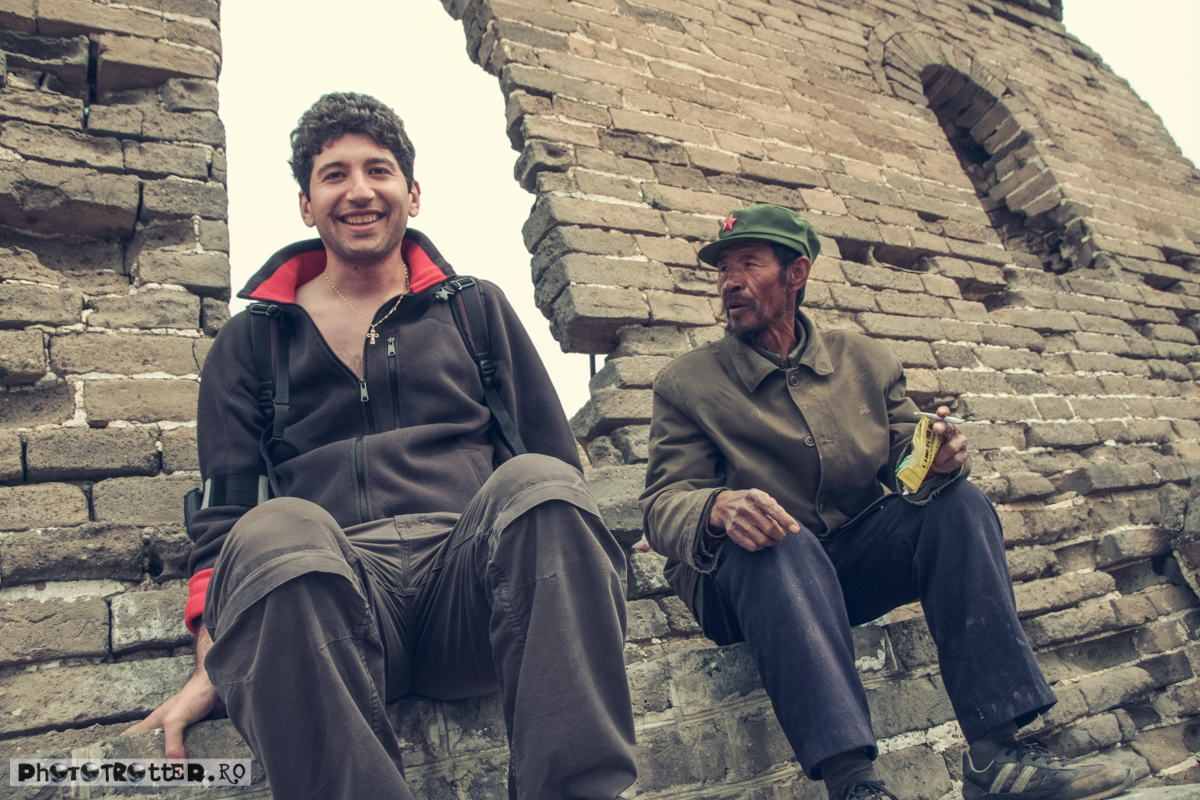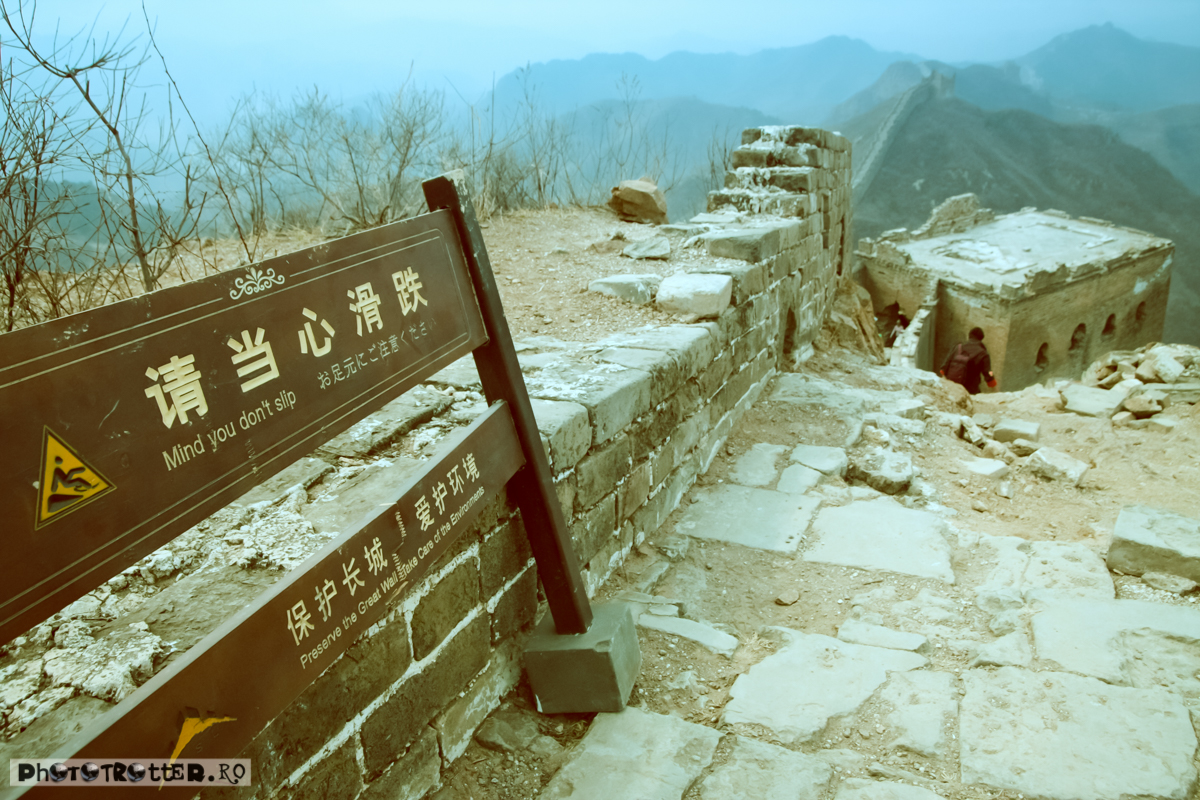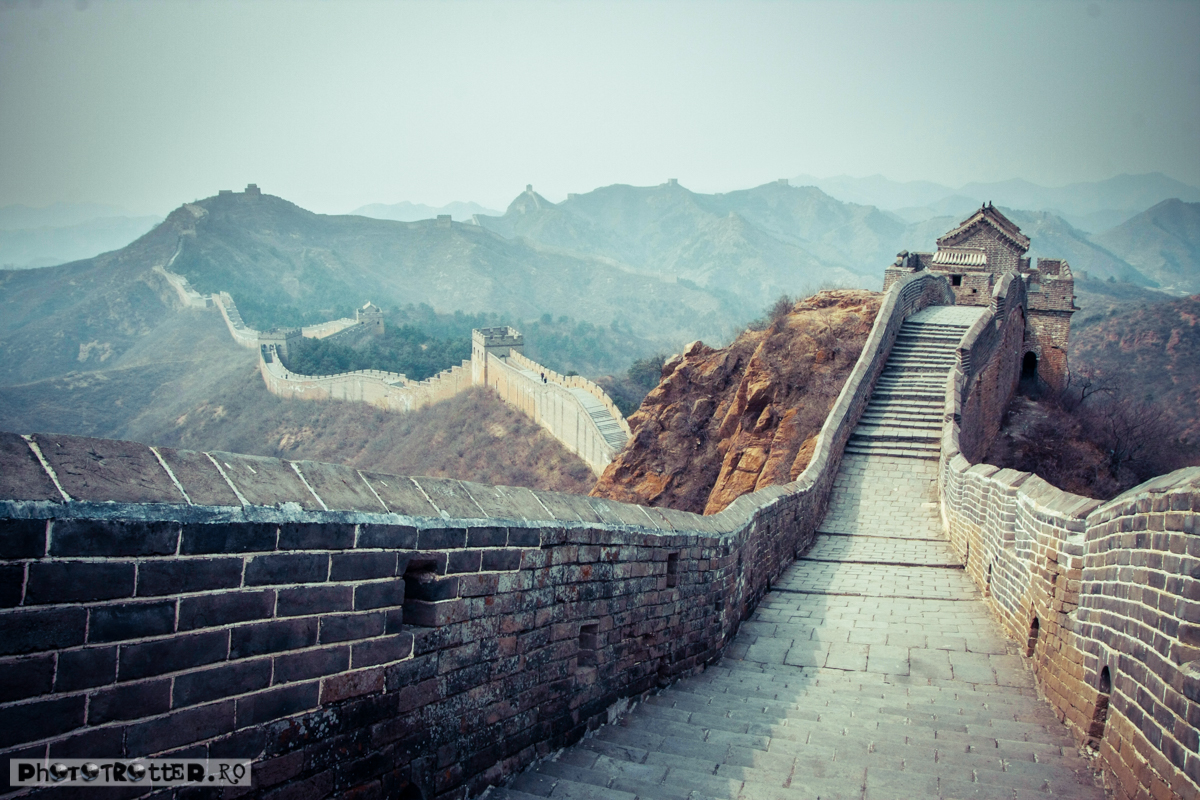The Great Wall of China at Jinshanling
While we were in Shanghai, we decided to quickly swing by the Great Wall of China for an impromptu visit. The “swing” was actually a 1200 km flight to Beijing, and another 150 km by bus.
Around Beijing there are several access points to the Wall. The most comfortably accessible one is Badaling, where the wall is wide, smooth and restored, but that comes with the price of being extremely popular. Between the option of being crammed like penguins inside a gaggle of tourists and travelling further to a more remote and wild location, we chose the latter.
Three hours and 150 km of broken roads later, we reached Jinshanling, where the Wall is preserved in a good old shape; in that area, you can see it as it was around 1570, when it was last repaired, and it looks rough and authentic.
Since it hasn’t been restored too recently, large sections are quite derelict. Some watchtowers are partly collapsed, the steps are crumbling, as are the retaining walls, and the paving is also decaying. The tourists choosing this part of the Wall are advised to have trekking shoes and expect some more strenuous parts.
We had come on a day trip arranged via our Beijing hostel, so we were on a time schedule which allowed us only 3-4 hours of roaming. We covered about 10 km of the Wall, several watchtowers and a good terrain variation: long steep stairs, sharp slopes with slippery stones and also many areas with undamaged, perfect bricks and tiles.
It was late March when we went there, nothing was green yet and the hills looked a little drab. On top of that, the spring air was hazy that day and crunched in your teeth, a familiar combination of local pollution and Mongolian desert dust riding the wild wind.
Some (fun) facts about the Wall
Speaking of earthy colours, there’s a false claim going around that the Wall is so great that you can see it from the Moon. You can’t, though. It’s not wide enough. Despite being very long, it’s only 9 meters wide, at most. Keeping the ratio, that would be like claiming you can see a single hair from 3 km away. The contrast doesn’t help either. The bricks are various shades of brown, and so are the surrounding hills. More on that here, straight from the astrohorse’s mouth.
Apropos of bricks, they are a recent addition to the Wall’s materials, dated around 14th century, during Ming dynasty. Before that it was just stones and rammed earth. Funny thing, archaeologists found out that the mortar used to keep those bricks together was part… sticky rice.
During the mid-20th century Cultural Revolution, the Wall became a victim of the eradication process targeting the Four Olds (old ideas, old culture, habits and customs). In some spots they even used dynamite, and the locals, also encouraged to destroy it, recycled the remains as construction materials for their own houses.
You might wonder, how great is the Great Wall of China? It was called Wanli Changcheng, the 10.000-li long wall. The length of a li (~500m) varied greatly during the past 4000 years, but it has been approximated to roughly 6000 km.
Despite what you might have thought, it isn’t – and never has been- a continuous construction. It “popped” wherever Mongolian hordes were invading on a regular basis, to keep them at bay. However, the Mongols located the gaps, the occasional raids became a formidable campaign, and in the 12th century, under the rule of Khans Genghis and Kublai, they managed to conquer China. All of it.
Another kind of conquest. Cold Coke on a centuries-old wall, hauled daily up -and downhill by the local hawker in his backpack.
Solitary tourist for actual scale
We can think of it now not as an actual single unitary construction, but as a defensive method that was used for millennia. The earliest records mention this wall around 7th century BC, and they kept building, repairing and improving, on and off, until mid 17th century.
It is said that around 1 million people died during its construction. When you know they’ve been tinkering at it for 2 millennia, that number suddenly doesn’t sound so implausible. And what could you do if your famished and exhausted work mate suddenly gave up the ghost? Bury him on location, of course, inside the wall. However, the archaeologists couldn’t find a single bone yet, so this one might just be another myth or misconception surrounding the Great Wall of China.
Which is called in China just “The Long Wall”.
Browse the Jinshanling gallery for more photos, including hawker, magpie and exhausted phototrotters, or just click away in the slideshow below.
